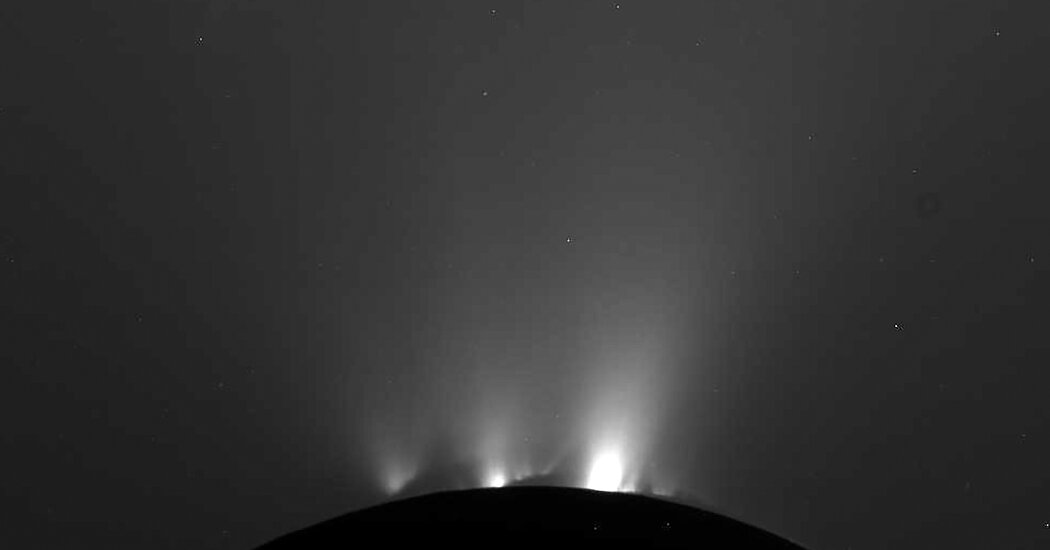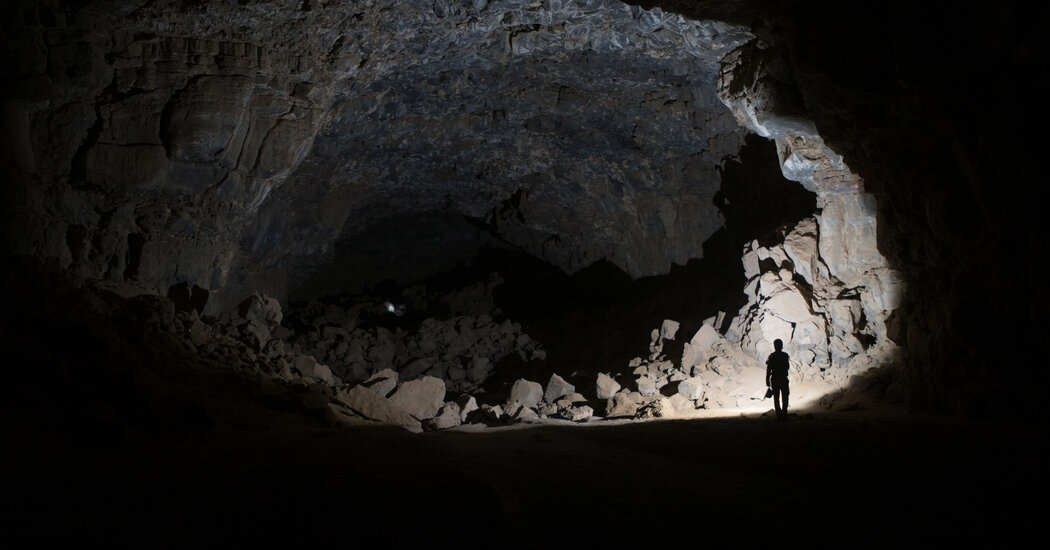

Scientists have detected a poison among the spray of molecules emanating from a small moon of Saturn. That adds to existing intrigue about the possibility of life there.
The poison is hydrogen cyanide, a colorless gas that is deadly to many Earth creatures. But it could have played a key role in chemical reactions that created the ingredients that set the stage for the advent of life.
“It’s the starting point for most theories on the origin of life,” said Jonah Peter, a biophysics graduate student at Harvard. “It’s sort of the Swiss Army knife of prebiotic chemistry.”
Thus, Mr. Peter was excited when he found hydrogen cyanide at Enceladus, an icy moon of Saturn that is about 310 miles across. It has a subsurface ocean that makes it among the most promising places to look for life elsewhere in the solar system.
Mr. Peter and his collaborators, Tom Nordheim and Kevin Hand of NASA’s Jet Propulsion Laboratory in California, reported their findings in a paper published on Thursday in the journal Nature Astronomy.
They also found organic molecules like acetylene, propene and ethane that could power chemical reactions to provide energy for microorganisms living in the Enceladus ocean. The data also points to the presence of an alcohol like methanol, although the researchers could not definitively identify which alcohol.
Chemical experiments have shown that hydrogen cyanide could be an important precursor to the molecules that had to be present for life to arise. “It can be combined in different ways to produce amino acids, which are precursors for proteins as well as nuclear bases and sugars which are needed to make RNA and DNA,” Mr. Peter said.
Two decades ago, Enceladus was seen as a mostly bland ice ball.
But in 2005, planetary scientists were startled when NASA’s Cassini spacecraft spotted plumes of vapor and ice crystals shooting out from fractures near the moon’s south pole. The tidal forces of Saturn pull and squeeze the inside of Enceladus, and the friction generates enough heat to melt the ice.
Initial analysis identified not only water but also carbon dioxide, methane, hydrogen and ammonia. The eruptions pointed to hydrothermal reactions below the surface, where hot rocks meet liquid water.
Subsequent sifting of data of the Cassini mission, which ended in 2017, has only added to the curiosity of what lies beneath. Scientists now believe that Enceladus possesses not just a pool of liquid water under its south pole but also a global ocean of salty water under an outer ice shell.
Earlier this year, another team of scientists reported that icy particles in the Enceladus plumes contained phosphates, which also pointed to geochemical interactions between the ocean and rocky floor. Phosphorus is another key element thought to be essential for life.
“Indeed, the prospects for the development of life are getting better and better on Enceladus,” said Frank Postberg, a professor of planetary science at the Free University of Berlin who led the phosphates study.
In the latest work, Mr. Peter and his collaborators again delved into data from the Cassini flybys. The amount of hydrogen cyanide is too small to be immediately observed. Instead, the researchers started with a list of 50 compounds that they thought might be present at Enceladus. Then they constructed models of 10 to 15 of those compounds, and they tested which models best fit what Cassini observed.
“It’s a nice analysis that was done in a way to sort of eke out some more information about what we can see in the plumes,” said Kathleen Craft, a planetary scientist at the Johns Hopkins Applied Physics Laboratory in Maryland.
For Dr. Craft, Enceladus is an intriguing place but not the only place. Other moons like Europa, which orbits Jupiter, also have under-ice oceans. An upcoming NASA mission, Europa Clipper, will carry an instrument similar to Cassini’s that might make similar discoveries.
“All ocean worlds are extremely exciting,” Dr. Craft said. “They all have a little bit of differences from one another, but they have a lot of similarities.”
The presence of hydrogen cyanide and the other newly reported organic compounds in the plumes of Enceladus “does not reveal the source of complex organic matter in the ocean,” said Alfonso Davila, a researcher in the exobiology branch at NASA’s Ames Research Center in California.
“But it brings us an inch closer to the answer,” he said.
24World Media does not take any responsibility of the information you see on this page. The content this page contains is from independent third-party content provider. If you have any concerns regarding the content, please free to write us here: contact@24worldmedia.com

Common Mistakes When Using Athletic Field Tarps

High-Performance Diesel Truck Upgrades You Should Consider

Warehouse Optimization Tips To Improve Performance

Fire Hazards in Daily Life: The Most Common Ignition Sources

Yellowstone’s Wolves: A Debate Over Their Role in the Park’s Ecosystem

Earth Day 2024: A Look at 3 Places Adapting Quickly to Fight Climate Change

Millions of Girls in Africa Will Miss HPV Shots After Merck Production Problem

This Lava Tube in Saudi Arabia Has Been a Human Refuge for 7,000 Years

Four Wild Ways to Save the Koala (That Just Might Work)

National Academy Asks Court to Strip Sackler Name From Endowment

Ways Industrial Copper Helps Energy Production

The Ins and Out of Industrial Conveyor Belts